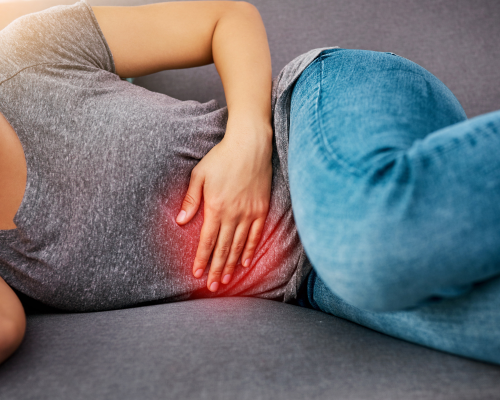Uterine Fibroid Embolisation (UFE)
What is Uterine Fibroid Embolisation (UFE)?
Uterine Fibroid Embolisation (UFE) is a minimally invasive procedure designed to treat symptomatic uterine fibroids without the need for traditional surgery. Fibroids are non-cancerous growths in or around the uterus that can cause heavy bleeding, pelvic pain, and pressure. UFE works by cutting off the blood supply to these fibroids, causing them to shrink and alleviate symptoms.
How UFE Works:
UFE is performed by a vascular specialist, typically under local anesthesia and sedation. Through a small incision in the groin or wrist, a catheter is inserted into the blood vessels supplying the fibroids. Tiny particles are then injected into the vessels, blocking blood flow to the fibroids. Without a blood supply, the fibroids shrink, and the symptoms such as heavy bleeding, pain, and pressure often diminish or disappear entirely.
Why Choose UFE?
- Non-Surgical: UFE is a minimally invasive procedure, meaning no large incisions, minimal pain, and a quicker recovery time than traditional surgery.
- Effective for Symptom Relief: Many women experience significant improvement in symptoms, including reduced bleeding and pain.
- Preserves the Uterus: Unlike hysterectomy or myomectomy, UFE allows women to retain their uterus, which may be important for those who wish to preserve fertility or avoid major surgery.
- Quick Recovery: Most patients can resume normal activities within 1-2 weeks, making it a convenient option compared to traditional surgical procedures.
Who is a Candidate for UFE?
UFE is typically recommended for women who:
- Have symptomatic fibroids causing pain, heavy bleeding, or other discomfort.
- Do not wish to undergo surgery or wish to avoid a hysterectomy.
- Are not currently pregnant and do not have other contraindications for the procedure.
- Have fibroids that are not too large or located in positions that are difficult to treat with embolisation.
What to Expect During the Procedure:
The procedure generally takes about 1-2 hours and is performed under local anesthesia with sedation to ensure comfort. You will be monitored closely throughout the procedure. A catheter is inserted into the femoral artery in the groin or sometimes the radial artery in the wrist. The doctor uses X-ray guidance to guide the catheter to the arteries feeding the fibroids, where small embolic agents (tiny particles) are released to block blood flow to the fibroids.
Recovery After UFE:
After the procedure, you will need to rest for several hours under observation. While the procedure is minimally invasive, you may experience some discomfort, such as cramping or pelvic pain, which typically resolves within a few days. Most women are able to return to their daily activities within 1-2 weeks. Mild swelling or bruising at the catheter site is common, but serious complications are rare.
Benefits of UFE:
- Minimally invasive with a short recovery time
- High success rate for symptom relief
- No need for general anesthesia or large incisions
- Fertility-preserving (in many cases)
- Can treat multiple fibroids at once
Is UFE Right for You?
If you’re experiencing symptoms related to uterine fibroids, UFE may be a safe and effective treatment option. Our vascular health specialists are here to assess your individual case and help you make an informed decision about your care. Contact us today to schedule a consultation and learn how UFE can help restore your quality of life.

Our Services
- Varicose Veins
- Deep Vein Thrombosis
- Vascular Malformation
- Aortic Aneurysms
- Mesenteric Vasculature
- Acute Limb Ischemia
- Peripheral Arterial Disease
- Stroke Prevention
- Angiography
- Vascular Access for Chemotherapy
- Spider Veins
- Glue Therapy
- Sclerotherapy
- AV Fistula
- Uterine Fibroid Embolisation
- Varicocele Embolisation
- Thyroid Ablation
- TACE
- Prostatic Artery Embolisation
- Varicocele Embolisation
